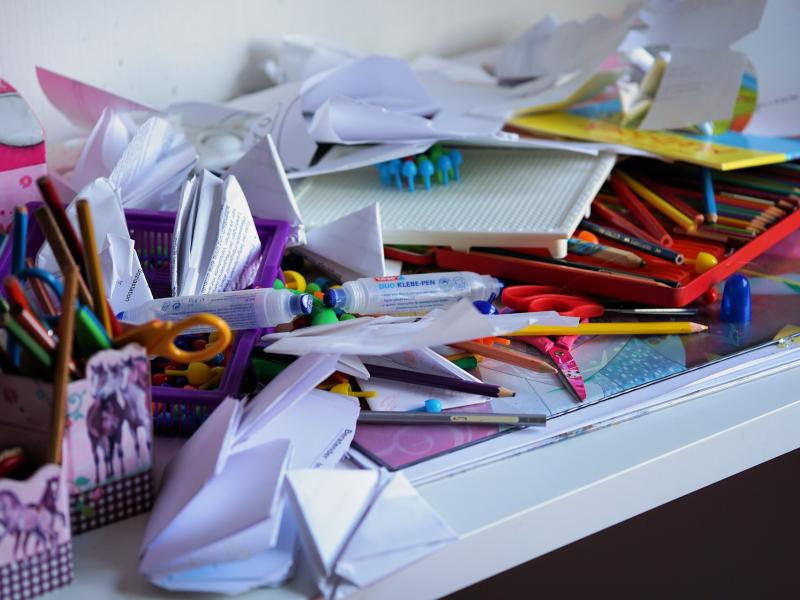
Deciding to take a room and sort out the clutter takes time and energy. A lot of us these days have the time and can muster up the needed energy. Hopefully if you are able to find some helpers the task will go smoothly and take no time at all. Here are a few rooms or things that may either get overlooked or just need a good amount of time to get a handle on them. By creating better habits maybe this one time cleaning will lead to a pattern of keeping the clutter to a minimum.
The family room/playroom/media room is where a lot of activity happens. It is a constant source of collection of papers, movies, books and toys. By going through these items and weeding out what you and your family no longer need or plays with can help manage the mess. Be sure to get rid of anything that no longer works or is damaged in any way. Gather any old books, CDs or DVDs that you may want to give to family or send to the local donation center. If you are close to the beginning of the school year designate a folder for pieces of art and schoolwork that you want to keep throughout the year. Towards the end of the year you can audit the folder and file it away in a document box.
One area that many people just don’t think about is your tool shed. It can get overstuffed quite easily. Keeping up on maintenance will help make sure that the tools and products you have in there stay in working order so that you don’t have broken items taking up space. Making a habit of clearing out non-working or items you just don’t need will help keep the space maintained. If possible keep tools and small electrics off the floor and on shelving units in order to keep the area neat and your items clean.
Your photos on your phone multiply quickly and sometimes they can get out of hand if you don’t sit down and organize them. The best way to get a handle on this is to download your photos from your phone to your computer. You can keep them in a storage area like a cloud service along with an external drive. Choose and start a grouping method that makes the most sense to you. By date or event or perhaps by child or pet. Whichever way you choose try and pick a few favorites from each category and get them printed and framed so you can display them. If you have any loose photos make sure they are stored on acid free paper in a photo book to keep them safe and organized.
Areas that tend to embrace clutter to the extreme are your main entrances to your home like a mudroom and the one place that everyone seems to have a junk drawer. These areas gather the most random things and need to be sorted through every so often in order to keep the areas functional. There is only so much junk that will fit in a drawer and if your entrance is cluttered no one will be able to get by. Your mudroom or entryway should be as functional as possible given the space you have. Hooks on the wall for coats and jackets and a boot tray to keep shoes organized may help keep things as in order as you can. If the space allows a unit with fabric drawers can help keep winter items within reach if needed or you can switch out the seasons and keep summer items handy. Junk drawers or even areas of your home that collect random things are a tricky thing since everything contained in one can be listed as an essential piece and “You never know when I’m going to need…”. Well, there has to be a line where you have to decide that you just don’t need the item. Try and separate what is necessary and what is not. Donate what you can and pitch or recycle what is not able to be donated.
Check with your local donation center and make sure they are open during these times. If not, box up your donations and store them until things can resume as usual. Make sure that items that can be recycled are and that anything hazardous you come across is disposed of properly. Hopefully, you can find good habits that will foster a clutter-free home!

